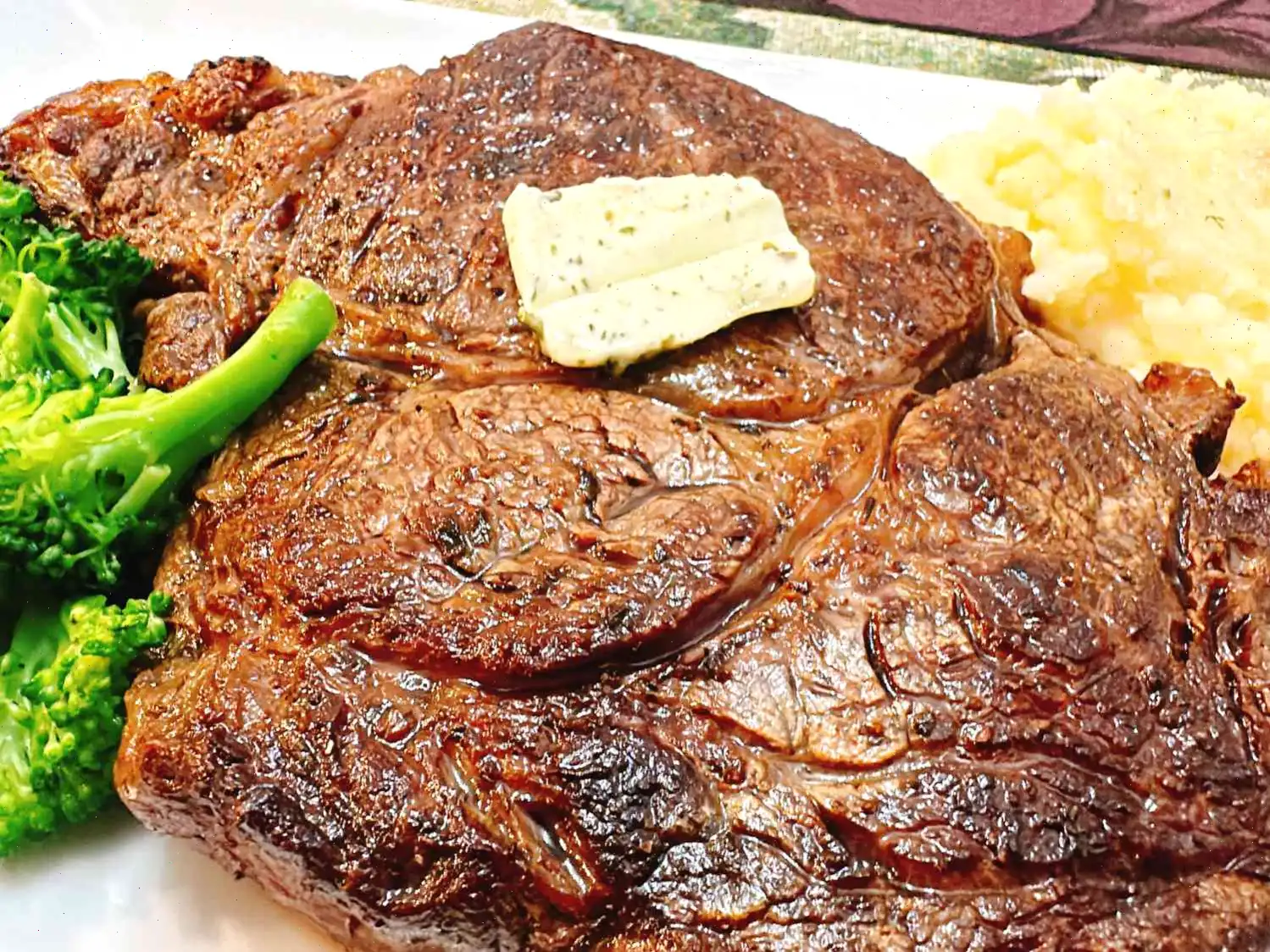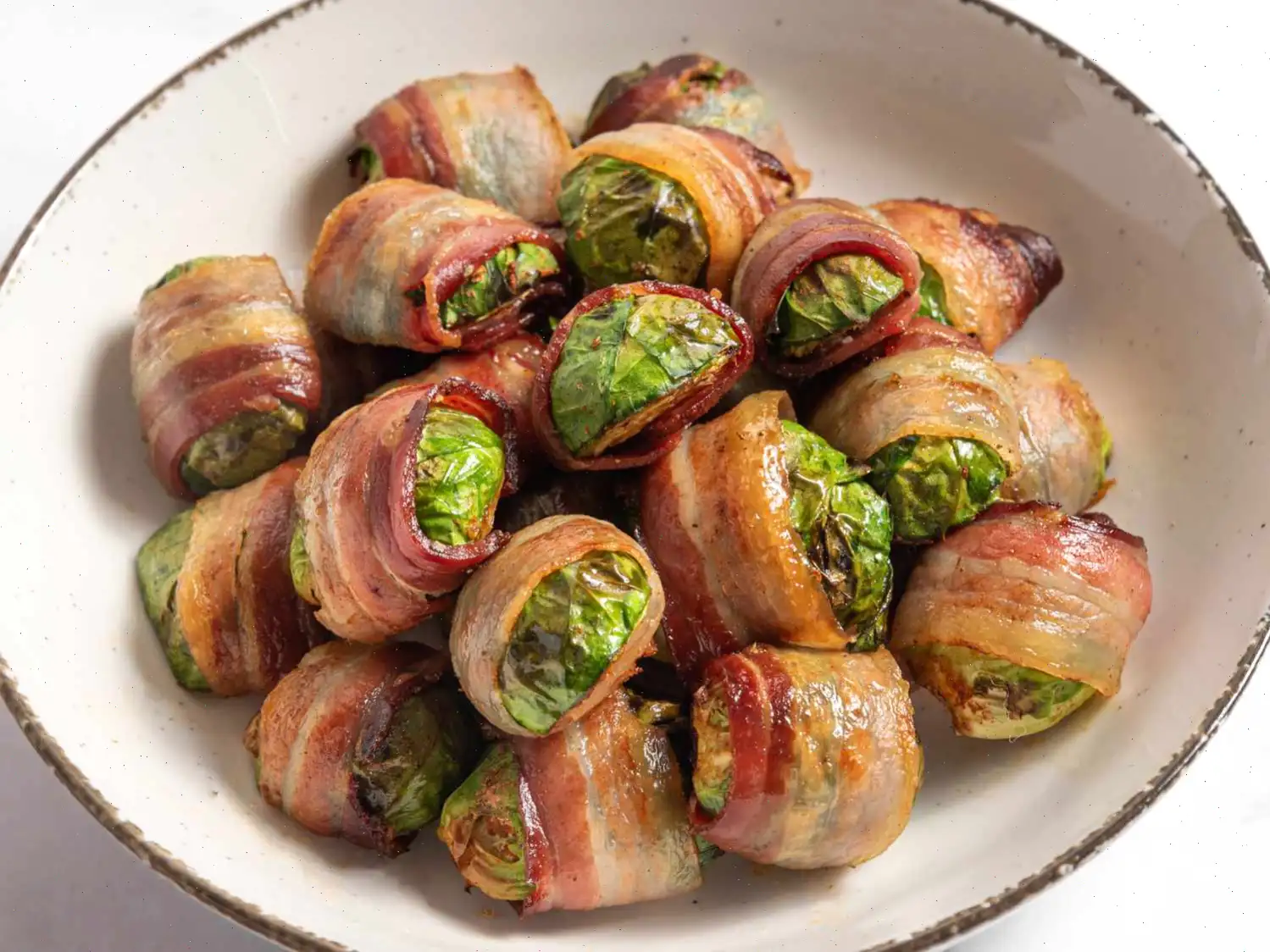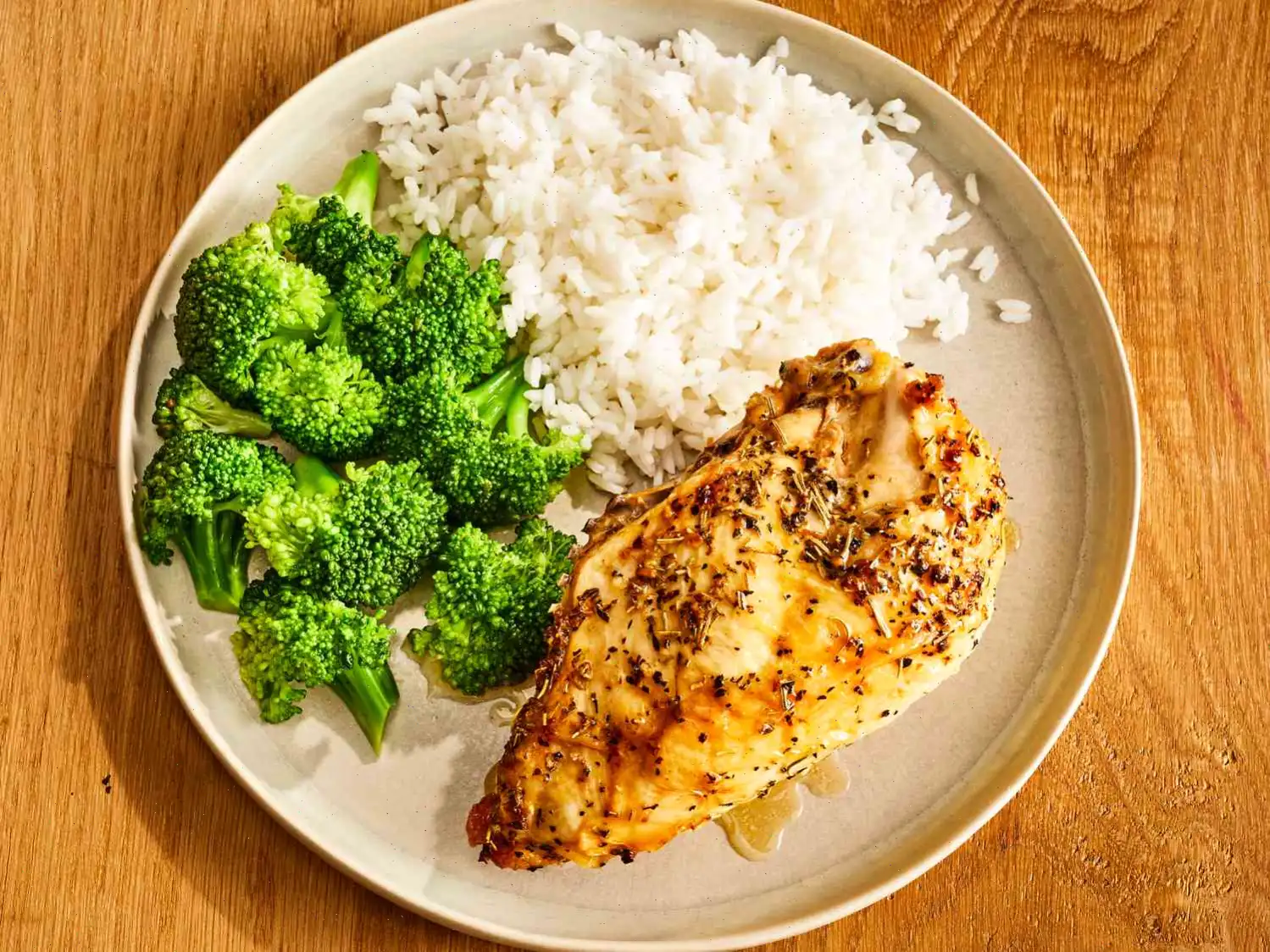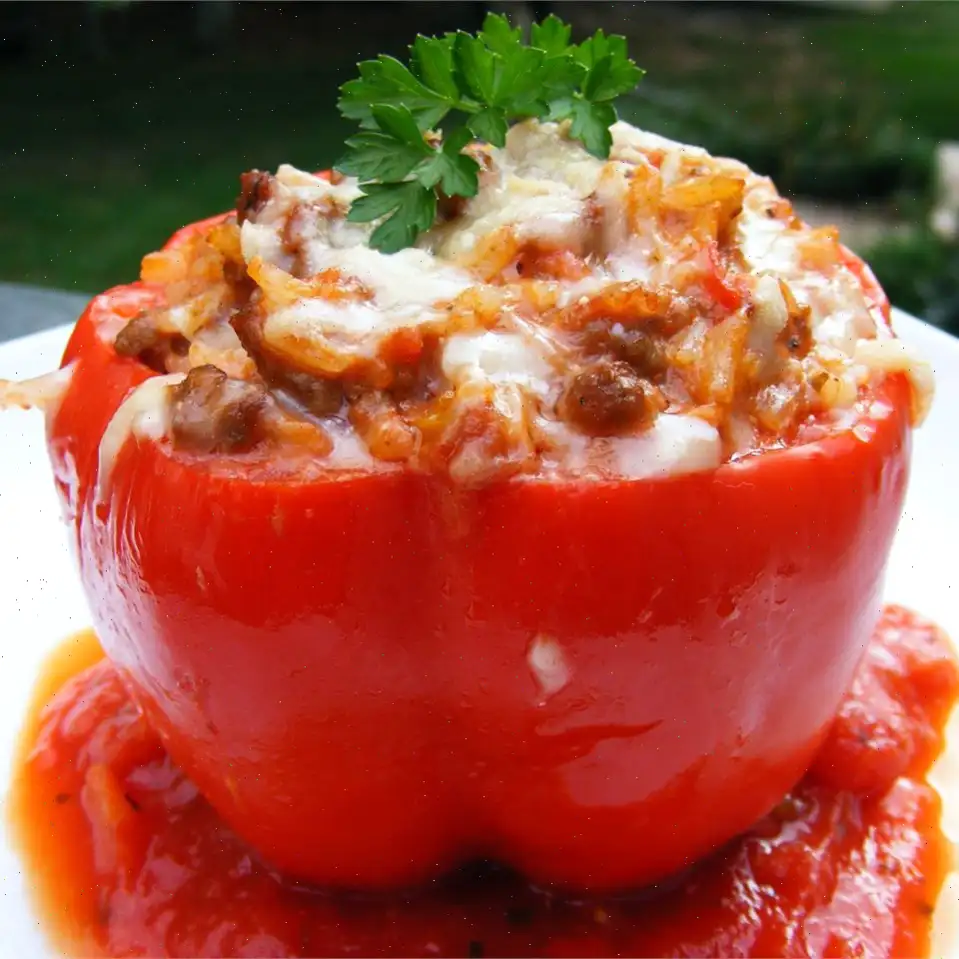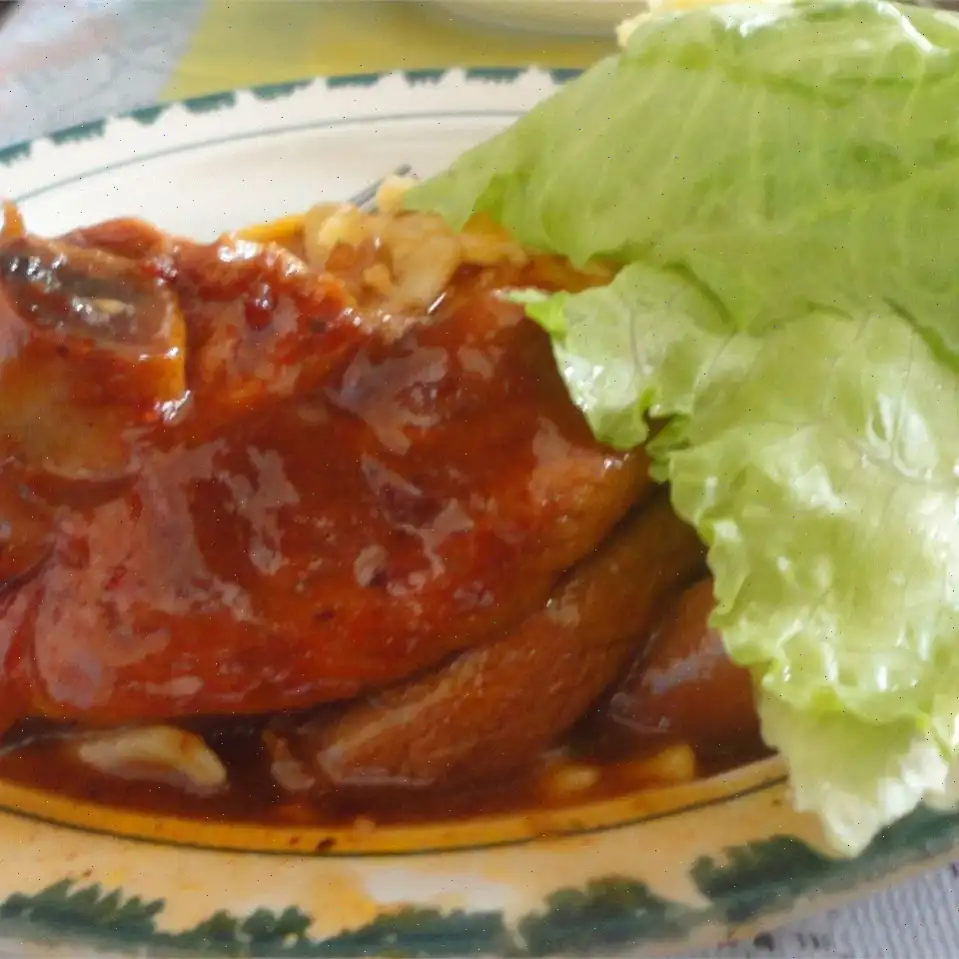
Butter Basted Rib Eye Steak Recipe
Ingredients
This recipe is based on the original yield, which is for 2 servings. The ingredient amounts are automatically adjusted, but the cooking times and instructions remain unchanged. Keep in mind that not all recipes scale perfectly.
- 1 ribeye steak (1 lb)
- Salt and freshly ground black pepper, to taste
- 2 tablespoons garlic and herb salted butter (such as Kerrygold), plus extra for serving (optional)
Directions
- Take the steak out of its packaging, pat it dry with paper towels, and place it on a plate. Refrigerate uncovered for 2 hours before cooking to help the steak reach room temperature.
- Heat a heavy skillet over medium-high heat until its hot. While the skillet heats up, generously season the steak with salt and pepper on both sides. Trim any excess fat from the edges of the steak.
- Once the skillet is hot, place the steak in the pan with the fattest side down. Let it cook for about 2 minutes, or until the fat is nicely browned.
- Continue to cook the steak for another 2 minutes, turning it to brown the entire surface. You should get a beautiful sear on both sides.
- Add the garlic and herb butter to the skillet. Let it melt and cook until it becomes slightly browned, adding a nutty flavor to the butter.
- Flip the steak over and continue cooking for an additional 2 minutes, spooning the browned butter over the steak to baste it as it cooks.
- Remove the steak from the skillet and transfer it to a plate. Tent it with aluminum foil and allow it to rest for about 7 minutes. This helps the juices redistribute, keeping the steak juicy and flavorful.
- Serve the steak with a dollop of the remaining garlic and herb butter on top for added richness.
Nutrition Facts
Nutrition information is based on a single serving (1 steak) of the original recipe, which yields 2 servings.
| Nutrient | Amount | % Daily Value* |
|---|---|---|
| Calories | 717 | |
| Total Fat | 55g | 70% |
| Saturated Fat | 26g | 132% |
| Cholesterol | 207mg | 69% |
| Sodium | 370mg | 16% |
| Total Carbohydrates | 0g | 0% |
| Dietary Fiber | 0g | 0% |
| Total Sugars | 0g | |
| Protein | 56g | 113% |
| Vitamin C | 0mg | 0% |
| Calcium | 31mg | 2% |
| Iron | 5mg | 30% |
| Potassium | 638mg | 14% |
* Percent Daily Values are based on a 2,000-calorie diet. Your daily values may be higher or lower depending on your calorie needs.
** Nutrient information is not available for all ingredients. The amount is based on the available data.
History of Butter Basted Rib Eye Steak
The butter-basted rib eye steak is a dish that traces its roots back to classic American steakhouse traditions, where premium cuts of beef were celebrated for their natural flavor and marbling. While steaks themselves have been central to American cuisine since the 19th century, the technique of basting in butter emerged as a way to elevate the richness and juiciness of the meat. By slowly spooning hot, melted butter over the steak while cooking, chefs ensured that every bite was infused with flavor, creating a luxurious texture that sets it apart from standard pan-seared or grilled steaks.
Regional Variations
While this preparation is predominantly associated with American cuisine, subtle regional variations exist. In the Midwest, where beef production is historically significant, cooks often use unsalted butter with fresh herbs like thyme and rosemary. In coastal regions, some chefs incorporate garlic or shallots into the basting butter for a more aromatic profile. Regardless of location, the emphasis remains on highlighting the quality of the rib eye and using butter to enhance, rather than mask, the natural flavor of the beef.
Distinction from Similar Dishes
Butter-basted rib eye differs from other popular steak preparations in several key ways. Unlike a simple grilled or broiled rib eye, the basting process adds both moisture and depth of flavor, creating a rich, glossy crust. Compared to a New York strip or filet mignon, the rib eye is prized for its marbling, which works exceptionally well with butter basting. The technique also contrasts with pan-searing in oil alone, as butter browns and infuses the meat with a nutty, complex aroma that is impossible to replicate with vegetable oils.
Where Its Commonly Served
Butter-basted rib eye is a staple on the menus of high-end steakhouses, often served alongside classic accompaniments such as mashed potatoes, sauted vegetables, or creamed spinach. It is also popular for home-cooked special occasions, particularly for dinner parties or celebratory meals where presentation and flavor are equally important. The dishs simplicity and elegance make it suitable for both casual and formal dining experiences.
Interesting Facts
- The term basting comes from the French word battre, meaning to beat, but in cooking, it refers to spooning liquid over food to keep it moist.
- Rib eye steaks are sometimes called the cowboy cut due to their thick, hearty structure and popularity in Western American steakhouses.
- Butter basting not only enhances flavor but also helps to achieve the perfect medium-rare interior while creating a golden-brown crust.
- Adding fresh herbs or garlic to the butter during basting creates subtle aromatics that elevate the dining experience without overpowering the meat.
- This technique is often used by professional chefs in Michelin-starred restaurants to highlight the natural richness of premium beef cuts.
You can listen to this recipe in AI audio format. Simply click the play button below to listen to the content in a format that suits you best. It’s a great way to absorb information on the go!
FAQ about Butter Basted Rib Eye Steak Recipe
Comments
Jennifer Evans
08/08/2024 11:35:27 PM
Quite good. I added sautéed onions on top of mine.


